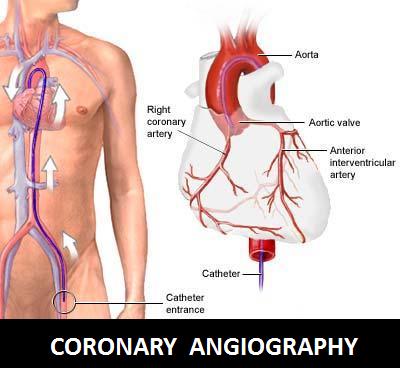 Invasive coronary angiography via cardiac catheterisation has been the gold standard in assessment of the coronary tree in patients with chest pain and ischemic heart diseases for more than half a century now. It has been used to assess the site and degree of coronary stenotic lesions, cardiac chambers' hemodynamics as well as its therapeutic uses in the mechanical dissolution of occluding clots by ballooning and stenting techniques.
Invasive coronary angiography via cardiac catheterisation has been the gold standard in assessment of the coronary tree in patients with chest pain and ischemic heart diseases for more than half a century now. It has been used to assess the site and degree of coronary stenotic lesions, cardiac chambers' hemodynamics as well as its therapeutic uses in the mechanical dissolution of occluding clots by ballooning and stenting techniques.
Despite the great success of coronary angiography as an assessment tool, the new advances in the field of diagnostic radiology has begun to offer a new promising non-invasive technique for coronary tree assessment using the MRI and multidetector CT, with promising results.
Non-invasive cardiac imaging techniques are evolving rapidly nowadays, and the multi-detector cardiac computed tomography that has been a research tool for long has begun to invade the world of daily clinical practise, to be an efficient alternative to invasive angiography in assessment of coronary atherosclerosis in many centers worldwide, for its significant economic benefit as well as the fact that it is a safe non-invasive technique which will definitely decrease the mortality and morbidity risks associated with the conventional invasive coronary angiography.
Many studies have been conducted to evaluate the accuracy of CT coronary angiography in defining focal coronary stenoses, and the contemporary multislice/multidetector CT (MSCT/MDCT) techniques have shown reliability in ruling out disease in non-diseased patients and in detecting significant atherosclerotic lesions in patients with ischemic heart diseases. In a group of selected patients, the use of 16- and 64-slice CT angiography has shown a sensitivity of more than 90%, and it was found that the increase in the number of detectors was directly proportional to the increase in the number of coronary segments that could be visualized and evaluated.
Leschka et al, presented the first study on the diagnostic performance of the 64-slice CT coronary angiography and reported a high sensitivity and specificity for detecting significant lesions. Another study named the CATSCAN trial, which was a multicentre 16-detector CT trial that enrolled 238 patients, has shown about 98% sensitivity for detecting stenotic segments as well as offering a great predictive value, and the results of these studies have encouraged the use of the CT angiography techniques in the clinical practice nowadays.
Although the applications of the cardiac MDCT are promising, there is still room for further improvement in the image acquisition and post-processing techniques. There are some drawbacks like the technological limitations that prevent the exact quantification of the degree of stenosis and the reliable visualisation of the small segments in the coronary tree. Also, the image quality is compromised in the morbidly obese patients, or with an abnormally fast or irregular cardiac rhythm. The coronary calcification (which is a frequent finding) can create a problem for the cardiac MDCT technique that leads to overestimation of the stenotic lesion, a phenomenon called "calcium blooming". There is also another drawback which is the high radiation dose required for running the test, that is almost twice the dose required for conventional coronary angiography, but the new "step and shoot" decreased the radiation dose by only turning the radiation tube on during a pre-specified period of the cardiac cycle for vessel imaging at end diastole which significantly decreased the radiation dose required, and helped solve that problem.
Currently the new 256- and 320-detector MDCT are under investigation, and hopefully will solve a lot of the problems and limitations of the technique. There is also the combined CT and MR imaging on the horizon that may provide a lot of valuable diagnostic information that is not available from other current imaging modalities.
So at last, the expected advances in the cardiac MDCT imaging are probably going to replace, or at least be a solid alternative for the conventional invasive angiography in the coming years, which will provide a great economic benefit, and avoid the risk of vascular rupture with invasive procedures, and of course most importantly, help in providing a better and more convenient service for our patients.











